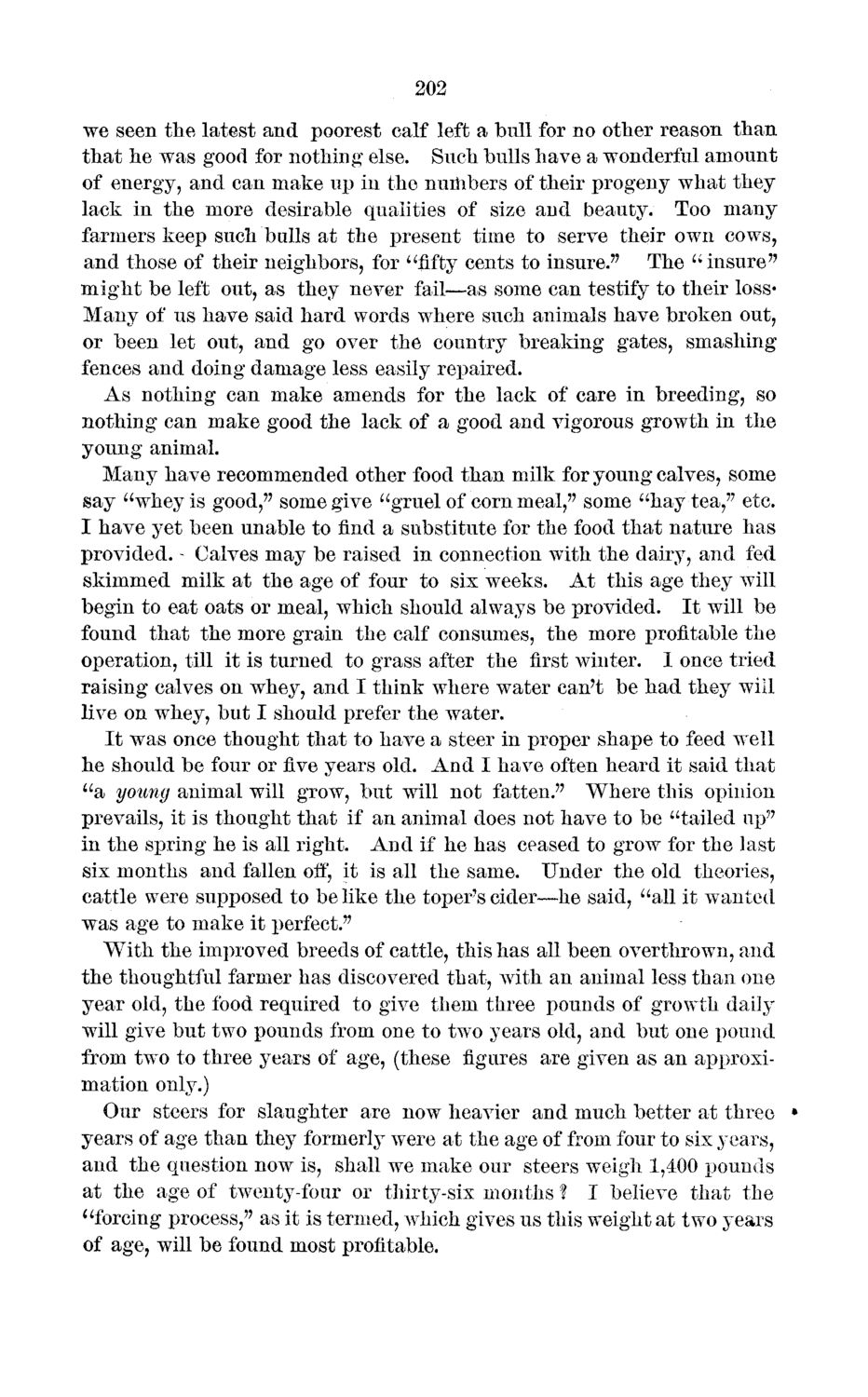| |
| |
Caption: Board of Trustees Minutes - 1873
This is a reduced-resolution page image for fast online browsing.

EXTRACTED TEXT FROM PAGE:
202 we seen the latest and poorest calf left a bull for no other reason than that he was good for nothing else. Such bulls have a wonderful amount of energy, and can make up in the numbers of their progeny what they lack in the more desirable qualities of size and beauty. Too many farmers keep such bulls at the present time to serve their own cows, and those of their neighbors, for "fifty cents to insure." The "insure" might be left out, as they never fail—as some can testify to their lossMany of us have said hard words where such animals have broken out, or been let out, and go over the country breaking gates, smashing fences and doing damage less easily repaired. As nothing can make amends for the lack of care in breeding, so nothing can make good the lack of a good and vigorous growth in the young animal. Many have recommended other food than milk for young calves, some say "whey is good," some give "gruel of corn meal," some "hay tea," etc. I have yet been unable to find a substitute for the food that nature has provided. - Calves may be raised in connection with the dairy, and fed skimmed milk at the age of four to six weeks. At this age they will begin to eat oats or meal, which should always be provided. It will be found that the more grain the calf consumes, the more profitable the operation, till it is turned to grass after the first winter. I once tried raising calves on whey, and I think where water can't be had they will live on whey, but I should prefer the water. It was once thought that to have a steer in proper shape to feed well he should be four or iive years old. And I have often heard it said that "a young animal will grow, but will not fatten." Where this opinion prevails, it is thought that if an animal does not have to be "tailed up" in the spring he is all right. And if he has ceased to grow for the last six months and fallen off, it is all the same. Under the old theories, cattle were supposed to belike the toper's cider—he said, "all it wanted was age to make it perfect." With the improved breeds of cattle, this has all been overthrown, and the thoughtful farmer has discovered that, with an animal less than one year old, the food required to give them three pounds of growth daily will give but two pounds from one to two years old, and but one pound from two to three years of age, (these figures are given as an approximation only.) Our steers for slaughter are now heavier and much better at three • years of age than they formerly were at the age of from four to six years, and the question now is, shall we make our steers weigh 1,400 pounds at the age of twenty-four or thirty-six months ? I believe that the "forcing process," as it is termed, which gives us this weight at two years of age, will be found most profitable.
| |